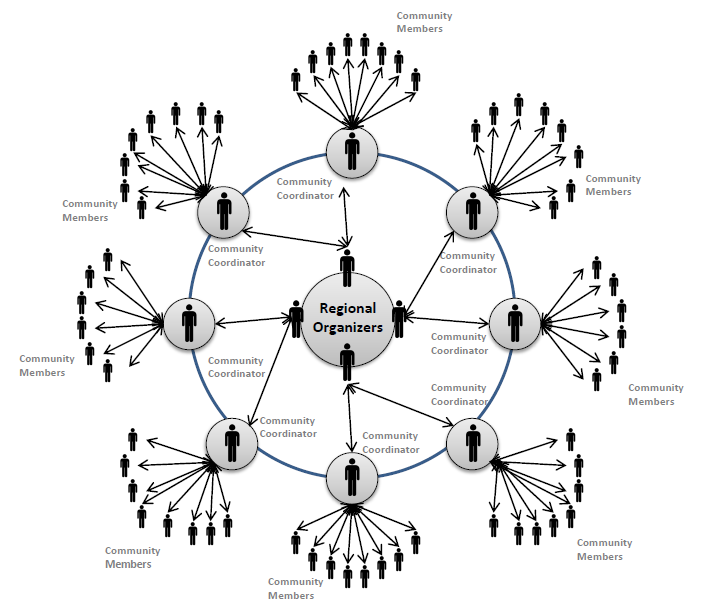Organizing in the digital space
"If digital organizing is an extension of in-person community organizing, then small organizations should be able to leverage the same strengths that make them successful in both worlds." - Transparency Initiative
The following steps will help get you started to navigate your role as a digital organizer:
- Consider a grassroots approach: Regardless of whether you are an individual, a group or an organization; adopting a grassroots approach to your organizing efforts is an ideal way to empower your supporters. This guide to grassroots community organizing is a good place to start in order to grasp the fundamentals of grassroots organizing.
- Come up with alternative ways to explain or describe the challenges faced and the issues at hand in accessible language. Consider alternating plain text documents with infographics, stories, images or short videos. Piktochart and Canva are both great to produce compelling infographics and images at no cost.
- Network online and reach out to community leaders, volunteers, local media, municipal workers, advocacy groups via social media. Twitter and LinkedIn are good places to start for outreach initiatives.
- Make sure the support and resources needed by your supporters are accessible and easy to find.
- Embrace diversity: There is no one size-fits-all approach to successful organizing. Your supporter and allies will likely come from diverse backgrounds.
- Recognize that there is power in small numbers. The opportunity lies in being able to connect, engage, entertain dialogue and build sustainable relationships with your online audience. This access to close engagement is has far more significance than accumulating likes, shares and retweets.
The Snowflake Model below is a great distributed approach model to leadership, both online and offline.

For more tools and resources on how to organize in the digital space, click here.
